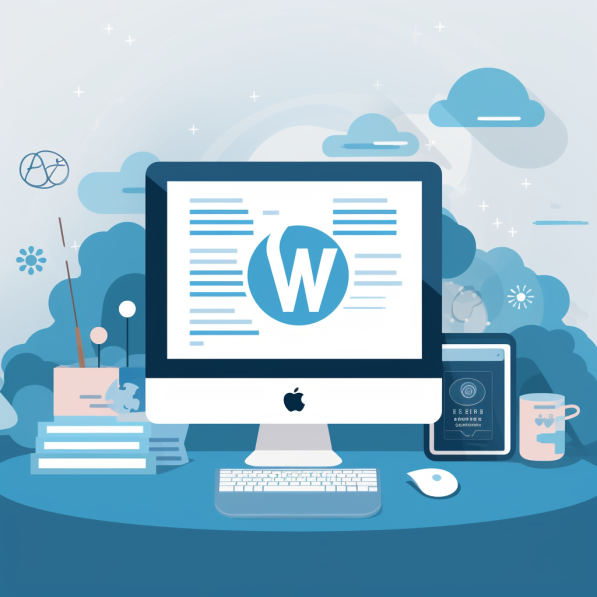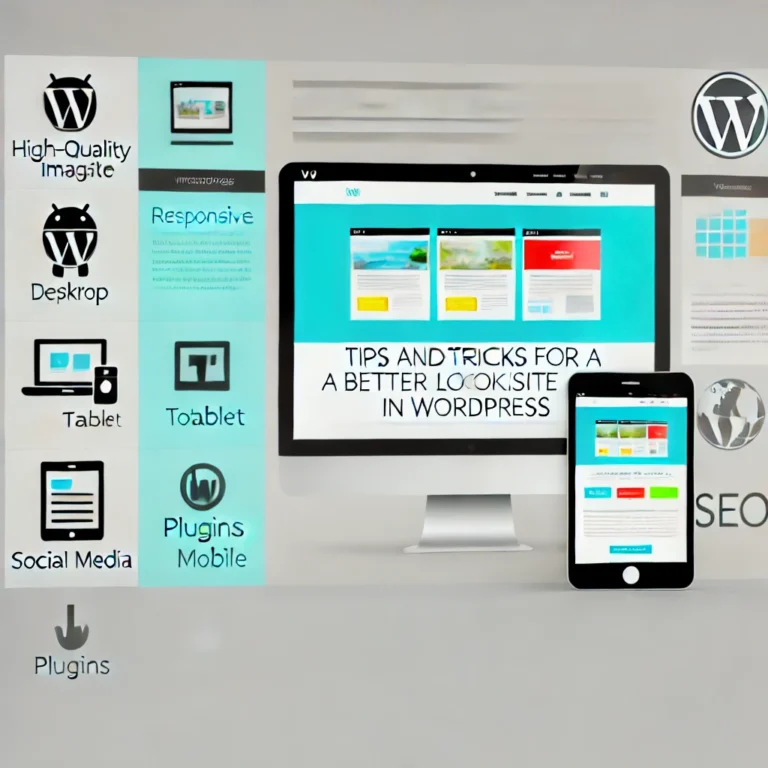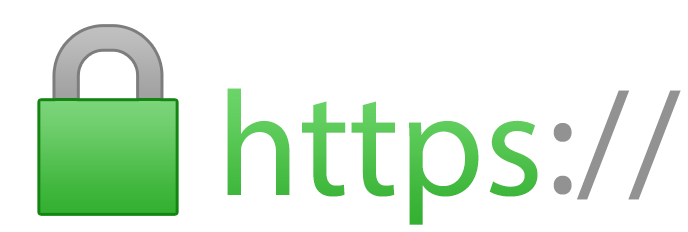how to create a wordpress website

There are many ways to create a website, having used word press for well over a decade I’ve not only learned to love and make use of this open-source platform, but I have also created various different types of websites. This can be achieved cover arguably, only through the power of WordPress and with all the many plugins that are available to hand.
That’s WordPress is more my area of expertise, this is the platform that I will recommend and below I have a detailed step-by-step guide and what you need to do from nothing all the way up to having a fully operational WordPress website.
Learn What the Real Cost of Setting up a Website is
1. Choose a Hosting Provider
This step and the next step (buying domain) can be switched around, nevertheless these are your starting points.
So for argumentsake, let’s begin with sourcing your hosting provider. If you’re anything like me I tend to try and go with the cheapest hosting provider but offers two important factors cost and functionality.
When it comes to cost with hosting it can fairly quite significantly. Sometimes there are just cheaper options out there, however you also have to balance this out with why they are cheaper and if paying a little bit extra means a better service.
When it comes to the features of the hosting obviously one important aspect is that they do in the first instance support a WordPress platform. Secondly, it is vitally important Kaba I have found, that customer services are second to non.
There will be times, guaranteed, when you will need to speak to the Tech team of your hosting provider. Whether it’s just downtime of the server or whether you need assistance removing a plug-in, it is vitally important that the customer service team is on the ball and responds to you quickly.
So with that in mind, sometimes it is Justified to pay that little bit extra for hosting. You can buy all means get the cheapest hosting on the market but as a consequence if there’s no customer support service I’ll you have constant issues in the background with your website then it really isn’t worth the headache, trust me I found this out the hard way!
Popular Hosting Provider Options
- Bluehost, SiteGround, and WP Engine.
2. Register a Domain Name
Picking a domain is a relatively straightforward process. You can simply use places like GoDaddy, namecheap, 123 reg and many others.
Simply type in the domain that you feel is most suitable for your business our website and then purchase it .
The vast majority of people will start a domain from scratch this way, as you are starting with the blank canvas in effect, it does mean that there will be likely a waiting time of at least a few months if not longer before your website even starts to see any traction in the rankings of Google, our other search engines.
There is another way around this, to buy an aged domain, however you do need to be careful using this method because there is some important criteria that has to be fulfilled for this to work.
There are Tools on the market out there to help you find aged domains, like spamzilla
3. Install WordPress
Depending on what Hosting Provider you go with, the methods on installing WordPress can vary.
With some hosting services, you can simply click a button and it will install WordPress for you. This is called the “one-click WordPress installation feature”.
If you don’t have this available then you can download WordPress from wordpress.org and manually install it.
How to Set up a WordPress Website
4. Select a Theme
The next step in setting up a website is to choose your WordPress theme. The thing with themes is that there are so many to choose from.
From free basic themes up to paid premium themes with specialised features such as Guttenberg, WP Page Builder and Elementor
Free themes are available in the WordPress theme directory.
Premium themes can be bought from sites like ThemeForest.
5. Adding Plugins
Now, when it comes to wordpresss Using plugins is my favourite part. The best thing about WordPress in my opinion, is the huge diverse range of plugins you can apply which offer a variety of different types of tasks and actions.
You can simply search for a type of plug-in you wish to add on to your website from making SEO easier, to auto posting your content at certain times and dates, through two more advanced and complex coding plugins and also content creation plugins, social media integration plus much more besides.
Many of these plugins are free, however there is a huge market for plugins on sale offering a wide variety of actions these plugins can take. Mainly designed to help you as a website/business owner.
Plugins, without doubt, enhance the functionality of your WordPress site, beyond all other platforms, which is why I love WordPress so much.
How to Use WordPress Plugins
There are 2 ways you can use a WordPress plugin. You can Install plugins directly from the WordPress dashboard under ‘Plugins’ > ‘Add New’.
OR
If you purchase a plugin directly and independently. you can download that as a zip file and then upload it to your plugin dashboard.
See Our Top 10 WordPress Plugins
Reccomndeded FREE WordPress Plugins
- Yoast SEO
- Akismet
- Jetpack.
Click here to see my favourite FREE WordPress plugins I Highly Recceoended when setting up a WordPress website for best functionality.
Reccomndeded Paid (Premium) WordPress Plugins
- Rank Math
- Link Whisperer
These are just a few examples, however if you’d like a more comprehensive guide on paid Plugins for your WordPress then do visit our Best Premium Plugins for WordPress.
6. Customize Your Site
Customizing and changing the layout of your website does to a large degree depend on what kind of theme you have in Place.
For instance cover if you have a free theme, then you can go to appearance -> customization, and some changes can be made there, I’ll be it because it’s a free theme they will be limited.
Additionally, the free themes often require more hard coding to do more bespoke changes to A layout or design.
There are a few paid premium themes that I would recommend, they are not a necessity, but they do make your life a lot easier. Themes such as Nice Pages and Kadence have more flexibility when it comes to Appearance – > Customization, but they also have far better webpage builders like Gutenberg and Elementor built in.
Personally, I prefer Guttenbergover Elemenator, but you have to try and play around with what suits you best.
In the CUstimation on WordPress you can also change things like colours, fonts and layout. Again depending on what theme you have.
7. Create Key Pages
When it comes to creating content for your WordPress website, the cornerstone pages home, about, contact and usually blog.
Personally, I use pages for the main important content all of the website. And then to fill things like the blog up I will write on the posts. So in there are two ways to add content either via a page of via post.
Either way, to tweak highlight add images colour things of that nature you can use what’s called the WordPress editor.
Since the early days of using the “Classic Editor”, there has been an upgrade to a new version of the wordpresss editor.
Personally, I like the old editor, but it’s worth playing around with both and seeing what suits you best.
8. Set Up a Blog (Optional)
One thing that is usually advised is to add a Blog to your website. A Blog is simply a collection of various are many posts all relevant to the main theme of the website itself. For example, if you’re website is about dog training then you will have a load of blog posts around dog training how to train your dog how to train your dog to sit how to train your dog to be toilet trained in the House etc.
Having a blog isn’t always necessary, but it is one that I will personally advise as generally speaking having more content on our website does help and not hinder.
Also as a side note in your settings > Reading don’t forget to set ‘Posts’ page.
9. Optimize for SEO
Now when it comes to getting traffic for your website, which ultimately it’s the main reason you are likely want a website in the first place, to advertise, promote our find leads for your business.
SEO otherwise known as search engine optimization is one of the main freeways of getting traffic from search engines such as Google or Bing.
There are however certain rules and guidelines that you need to follow for your website to become optimized.
What are the first things that we would recommend is starting with a yost SEO plugin, it’s not necessarily the best on the market but it is a free one and a good starting point. What this plugging will do is help With your meta descriptions and title so when you are seeing on Google the text and the title scene by somebody searching on Google but just be optimized at little bit more with very little input by yourself before stop.
However, spending time yourself on adding main keywords into your meditative descriptions in regards to what you would like to be found for plus a call to Action in your description would be something that may help what’s called CTR otherwise known as click-through rate And potentially increase and improving your rankings over Time.
There is a lot more to SEO as well apart from this simple tricks, these are just the basics, we will cover SEO in more detail on another post which you can see through this Seo Best Practices ink.
10. Set Up Security
Stopping your WordPress website from getting hacked is very important and highly recommended. There are some great security plugins which are highly recommended to use.
Also always keep your WordPress website regularly updated and this means all themes and plugins as well as word press itself always check you are on the latest version.
11. Regular Maintenance
With WordPress major issues do tend to be quite rare, but they do happen.
To always safeguard yourself always make sure you keep regular backups of your website. Now, depending on your hosting provider, this quite often can be done automatically in the background, at the time of taking our hosting it is always worth the question as to what the process is in regards to regularly keeping your website backed up, just in case any major issues occur with your website and you need to re-upload a previous version.
12. Launch Your Site
This isn’t always required but for example if you are hosting with a provider like Bluehost you do need to remove the ‘Coming Soon’ page, otherwise nobody can see your website including search engines.
Ideally, you want to have content already on your website before you release it to the public, this isn’t a hard-and-fast rule but generally speaking at least 20 to 30 pages are posts is what I would recommend before releasing your website to the public. By doing this the search engines then we’ll have enough information to go off to know exactly what your website is about, get a good feel as to what your message is, and also rank accordingly.
Just as a side note, you won’t necessarily rank your website straight from the off, it can take time for your pages I’ll post to filter through onto search engines, also there’s additional off-page SEO that’s required such as backlinking for example.
However, in the meantime keep on regularly posting content I would recommend at least 2 to 3 posts per week ideally one per day, and also start communicating your message out to other platforms such as social media.
Time and patience are key for making a website work especially when it comes to SEO.
keywords
cost of wordpress website
backing up a wordpress website
customize wordpress website
custom website vs wordpress







